From openmichigan
None of the information presented below should be considered legal advice in any way. If you are in need of counseling on copyright or any other form of law, please seek the advice of a licensed attorney.
Purpose of the Casebook
- The Casebook is meant to help guide you, the dScribe, in making better recommendations about how to clear a particular content object. There is also the RAD (Recommended Action Decision) Tree] to assist you in recommending actions. But when it is tough to know what action to recommend, the Casebook helps to provide you with more insight about what to do next. If you are still unsure, never hesitate to contact your dScribe2 with questions.
- Note: We are not determining whether or not the use of the image is a Fair Use with this Case Book. Instead we are determining whether or not the content object is protected by US Copyright law. If you feel that your particular use could fall under Fair Use then recommend a Retain/Copyright Analysis and give reasons why. Your dScribe2 will then analyze the Fair Use case and agree with your recommendation or not.
Format of Casebook
- 1. The Casebook is organized into separate sections based on content type classifications (e.g. Artwork, Photographs, Illustrations, etc.)
- 2. Each section contains example content objects drawn from the U-M OER clearing process or our review of U.S. copyright case law.
- 3. Each example content object has an associated rationale / explanation that outlines why the object either falls under copyright or why it may be exempt from copyright. We provide both a general summary regarding this analysis and a more advanced explanation, which includes references to decisions of U.S. copyright cases. Finally, we suggest a recommended action to take in clearing the object.
How to Use the Casebook
- 1. Take a content object from a given course material and classify it according to its content type. (Use the Content Object Identification Instructions if you need assistance).
- 2. Next, compare your content object to the examples you see presented.
- Ask yourself, does my content object look more like this content object or like that content object?
- 3. Once you decide, review the explanation / rational box to learn more about how our team thinks about the content and whether a similar rationale might apply to your object.
- 4. Consult the Recommended Action section and if you agree, return to OERca and make the given recommendation. Add any additional metadata and note that you have used the Casebook in the Comments field.
- Note: A dScribe 2 may review the content object and provide feedback on your suggestion.
- 5. If you have a more specific interest in our analysis, consult the Advanced explanation section to review the case law and other commentary we have used to come to our particular determination.
[edit] Casebook
[edit] General Statements
- Content Objects that you can use with a "Retain:Permission" reasoning include:
- COs that are in the public domain
- This includes scans of public domain works (text or image).
- COs that are licensed using an Open Content License.
- COs that are created by a professor/instructor that has given permission to Open.Michigan to use their material in the production of OER.
- Ask your dScribe2 if you are unsure.
[edit] Pictorial Works
Pictorial works is a broad category that includes photographs, cartoons, illustrations, paintings, sculptural works, comics, charts, graphs, etc.
[edit] Paintings
|
A Reproduction of a Painting 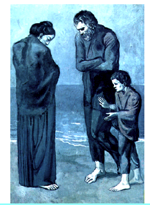
|
- This image is an accurate representation of the original painting.
- The original painting is in the public domain (published before 1923).
- As such, this digital image is also in the public domain.
|
Mark as:
- Retain: Copyright Analysis
|
Effectively, the copyright status of the faithful reproduction (eg: scan or photograph) of an artwork is determined by the copyright status of the original artwork. This is because there is no new creative expression.
Case Law:
- Bridgeman Art Library, Ltd. v. Corel Corp., 36 F. Supp. 2d 191 (S.D.N.Y. 1999)
|
|
A Reproduction of a Painting 
|
- This image is an accurate representation of the original painting.
- The original painting, however, is still protected by copyright (not in the public domain).
- As such, this digital image is also protected by copyright.
|
Mark as: Remove & Annotate
- (or Search for a replacement)
|
The reproduction (the scan/photograph) of the original is governed by the copyright of the original.
Case Law:
- Bridgeman Art Library, Ltd. v. Corel Corp., 36 F. Supp. 2d 191 (S.D.N.Y. 1999)
|
[edit] Charts
Charts, generally, are depictions of data in graphical form. Insofar as the chart exists to represent data, then it is not protected by copyright law. However, charts can contain elements that do enjoy copyright protection. For example, a chart explaining the rate of drug absorption into the bloodstream is probably not protected by copyright; the doodles on the side of that chart are. It is important to note that even though a chart has many colors or is complex, if those colors and complexity exist to explain the underlying data, then they are not protected by copyright law. Overall, we must be careful to remove all protectable elements from charts that we choose to publish.
|
A Diagram 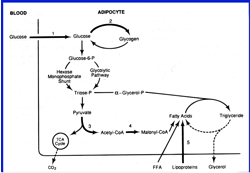
|
- This is a simple diagram/schematic depicting a process.
- The underlying process is not protected by copyright.
- This depiction shows common/standard/typical/ordinary/basic/routine choices for the content type.
- Thus this depiction is also not protected by copyright.
|
- Retain: Copyright Analysis
|
A chart like the one illustrated is fundamentally data driven and a graphical representation of a system or process, as such, it does not enjoy copyright protection.
Statute
- 17 U.S.C. § 102(b)- In no case does copyright protection for an original work of authorship extend to any idea, procedure, process, system, method of operation, concept, principle, or discovery, regardless of the form in which it is described, explained, illustrated, or embodied in such work.
Case Law:
- Baker v. Seldon, 101 U.S. 99 (1879)
|
|
A Simple Map 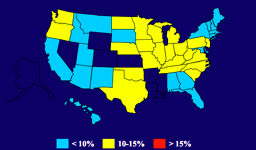
|
- This image fundamentally serves to represent data.
- The underlying data is not protected by copyright.
- This depiction shows common/standard/typical/ordinary/basic/routine choices for the content type.
- There are no real expressive elements, all choices have been made for clarity and to illustrate the underlying data.
|
- Retain: Copyright Analysis
|
- A chart like the one illustrated is a clear visual representation of data, there is no expression or requisite spark of creativity here.
- Be careful with maps. Maps of fanciful or imaginary locations are likely going to be protected by copyright.
Statute
- 17 U.S.C. § 102(b)- In no case does copyright protection for an original work of authorship extend to any idea, procedure, process, system, method of operation, concept, principle, or discovery, regardless of the form in which it is described, explained, illustrated, or embodied in such work.
Case Law:
- Baker v. Seldon, 101 U.S. 99 (1879)
|
|
A Growth Chart 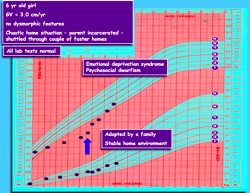
|
- This image fundamentally serves to represent data.
- The underlying data is not protected by copyright.
- This depiction shows common/standard/typical/ordinary/basic/routine choices for the content type.
- There are no real expressive elements, all choices have been made for clarity and to illustrate the underlying data.
|
- Retain: Copyright Analysis
|
- A chart like the one illustrated is fundamentally a representation of data, and lacks the requisite spark of creativity required for copyright protection.
Statute
- 17 U.S.C. § 102(b)- In no case does copyright protection for an original work of authorship extend to any idea, procedure, process, system, method of operation, concept, principle, or discovery, regardless of the form in which it is described, explained, illustrated, or embodied in such work.
Case Law:
- Baker v. Seldon, 101 U.S. 99 (1879)
|
|
A simple process 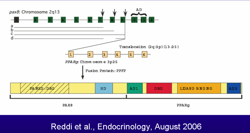
|
- This is a simple diagram/schematic depicting a process.
- The underlying process is not protected by copyright.
- This depiction shows common/standard/typical/ordinary/basic/routine choices for the content type.
- Thus this depiction is also not protected by copyright.
|
- Retain: Copyright Analysis
|
- A flow chart like the one illustrated is a clear visual representation of a process.
- This chart has uses common/standard/typical/ordinary/basic/routine practices for the content type.
Statute
- 17 U.S.C. § 102(b)- In no case does copyright protection for an original work of authorship extend to any idea, procedure, process, system, method of operation, concept, principle, or discovery, regardless of the form in which it is described, explained, illustrated, or embodied in such work.
Case Law:
- Baker v. Seldon, 101 U.S. 99 (1879)
|
|
A moderately more expressive process 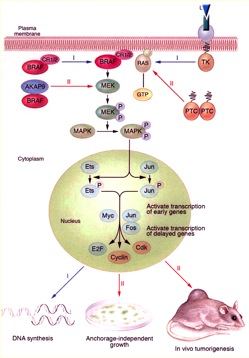
|
- This is a diagram/schematic depicting a process.
- The underlying process is not protected by copyright.
- This depiction shows some creative choice however. The creative elements are protected by copyright law.
|
- Remove & Annotate
- (or Search for a replacement)
|
- A flow chart like the one illustrated is a clear visual representation of a process.
- This chart has several creative elements that denote authorship. However, only the creative elements are protected by copyright, the process illustrations are not protectable.
Case Law:
- Baker v. Seldon, 101 U.S. 99 (1879)
|
[edit] Graphs
Graphs, generally, are depictions of data in graphical form. Insofar as the graph exists to represent data, then it is not protected by copyright law. However, graphs can contain elements that do enjoy copyright protection. For example, a graph showing the distribution of heights of a sample of adults is probably not protected by copyright; illustrations accompanying the chart may be protected. It is important to note that even though a graph has many colors or is complex, if those colors and complexity exist to explain the underlying data, then they are not protected by copyright law. Overall, we must be careful to remove all protectable elements from charts that we choose to publish.
|
A Basic Plot 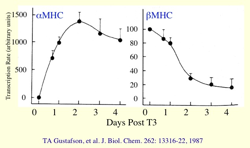
|
- This image is a basic data-driven graph.
- The data which makes up this graph is factual information (either from an experiment, measurements, or other data gathering procedure).
- This depiction shows common/standard/typical/ordinary/basic/routine choices for the content type.
- Thus, this graph is not protected by copyright.
|
- Retain: Copyright Analysis
|
Objects which are considered "Useful Articles" are not protected by copyright law. "Useful Article" is defined, by 17 U.S.C 101, as "an article having an intrinsic utilitarian function that is not merely to portray the appearance of the article or to convey information. An article that is normally a part of a useful article is considered a useful article"
Facts, ideas, and concepts themselves are not subject to copyright protection. However, a given expression of facts can be protected by copyright (depending on other factors). This is referred to as the "Idea vs Expression" divide.
- This graph is highly data driven. It has few elements that appear to merit copyright protection.
Statute
- 17 U.S.C. § 102(b)- In no case does copyright protection for an original work of authorship extend to any idea, procedure, process, system, method of operation, concept, principle, or discovery, regardless of the form in which it is described, explained, illustrated, or embodied in such work.
Case Law:
- Feist Publications, Inc., v. Rural Telephone Service Co., 499 U.S. 340 (1991)
- Hoehling v. Universal City Studios, Inc., 618 F.2d 972 (2nd Cir. 1980)
- American Institute of Architects v. Fenichel, 41 F.Supp. 146 (S.D.N.Y. 1941)
- (if you can find them fulltext of the case online, please link to it here!)
|
|
A Basic Scatter Plot
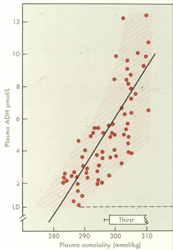
|
- This image is a basic data-driven graph.
- The data which makes up this graph is factual information (either from an experiment, measurements, or other data gathering procedure).
- This depiction shows common/standard/typical/ordinary/basic/routine choices for the content type.
- Thus, this graph is not protected by copyright.
|
- Retain: Copyright Analysis
|
- This graph is highly data driven.
- It has common/standard/typical/ordinary/basic/routine elements.
Facts, ideas, and concepts themselves are not subject to copyright protection. However, a given expression of facts can be protected by copyright (depending on other factors). This is referred to as the "Idea vs Expression" divide. Statute
- 17 U.S.C. § 102(b)- In no case does copyright protection for an original work of authorship extend to any idea, procedure, process, system, method of operation, concept, principle, or discovery, regardless of the form in which it is described, explained, illustrated, or embodied in such work.
Case Law:
- Feist Publications, Inc., v. Rural Telephone Service Co., 499 U.S. 340 (1991)
- Hoehling v. Universal City Studios, Inc., 618 F.2d 972 (2nd Cir. 1980)
- American Institute of Architects v. Fenichel, 41 F.Supp. 146 (S.D.N.Y. 1941)
- (if you can find them fulltext of the case online, please link to it here!)
|
|
A Basic Color Bar Graph 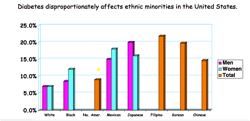
|
- This image is a basic data-driven graph.
- The data which makes up this graph is factual information (either from an experiment, measurements, or other data gathering procedure).
- This depiction shows common/standard/typical/ordinary/basic/routine choices for the content type.
- Thus, this graph is not protected by copyright.
|
- Retain: Copyright Analysis
|
- While there are colors in this graph, they are here to represent data, and do not reflect any creative choices. As such, they do not enjoy copyright protection.
Facts, ideas, and concepts themselves are not subject to copyright protection. However, a given expression of facts can be protected by copyright (depending on other factors). This is referred to as the "Idea vs Expression" divide. Statute
- 17 U.S.C. § 102(b)- In no case does copyright protection for an original work of authorship extend to any idea, procedure, process, system, method of operation, concept, principle, or discovery, regardless of the form in which it is described, explained, illustrated, or embodied in such work.
Case Law:
- Feist Publications, Inc., v. Rural Telephone Service Co., 499 U.S. 340 (1991)
- Hoehling v. Universal City Studios, Inc., 618 F.2d 972 (2nd Cir. 1980)
- American Institute of Architects v. Fenichel, 41 F.Supp. 146 (S.D.N.Y. 1941)
- (if you can find them fulltext of the case online, please link to it here!)
|
|
A Comparative Color Graph 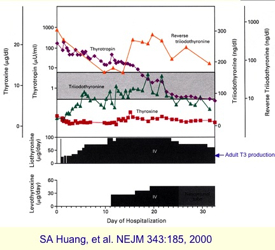
|
- This image is a basic data-driven graph.
- The data which makes up this graph is factual information (either from an experiment, measurements, or other data gathering procedure).
- This depiction shows common/standard/typical/ordinary/basic/routine choices for the content type.
- Thus, this graph is not protected by copyright.
|
- Retain: Copyright Analysis
|
- A graph like the one illustrated has complexity, but complexity alone is not sufficient for copyright protection.
Facts, ideas, and concepts themselves are not subject to copyright protection. However, a given expression of facts can be protected by copyright (depending on other factors). This is referred to as the "Idea vs Expression" divide. Statute
- 17 U.S.C. § 102(b)- In no case does copyright protection for an original work of authorship extend to any idea, procedure, process, system, method of operation, concept, principle, or discovery, regardless of the form in which it is described, explained, illustrated, or embodied in such work.
Case Law:
- Feist Publications, Inc., v. Rural Telephone Service Co., 499 U.S. 340 (1991)
- Hoehling v. Universal City Studios, Inc. 618 F.2d 972 (2nd Cir. 1980)
- American Institute of Architects v. Fenichel, 41 F.Supp. 146 (S.D.N.Y. 1941)
- (if you can find them fulltext of the case online, please link to it here!)
|
|
A Comparative Color Graph 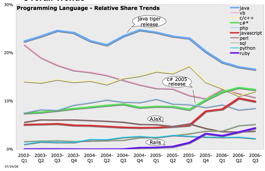
|
- This image is a basic data-driven graph.
- The data which makes up this graph is factual information (either from an experiment, measurements, or other data gathering procedure).
- This depiction shows common/standard/typical/ordinary/basic/routine choices for the content type.
- Thus, this graph is not protected by copyright.
|
- Retain: Copyright Analysis
|
- A graph like the one illustrated has complexity, but complexity alone is not sufficient for copyright protection.
Facts, ideas, and concepts themselves are not subject to copyright protection. However, a given expression of facts can be protected by copyright (depending on other factors). This is referred to as the "Idea vs Expression" divide. Statute
- 17 U.S.C. § 102(b)- In no case does copyright protection for an original work of authorship extend to any idea, procedure, process, system, method of operation, concept, principle, or discovery, regardless of the form in which it is described, explained, illustrated, or embodied in such work.
Case Law:
- Feist Publications, Inc., v. Rural Telephone Service Co., 499 U.S. 340 (1991)
- Hoehling v. Universal City Studios, Inc. 618 F.2d 972 (2nd Cir. 1980)
- American Institute of Architects v. Fenichel, 41 F.Supp. 146 (S.D.N.Y. 1941)
- (if you can find them fulltext of the case online, please link to it here!)
|
[edit] Illustrations
Illustrations, generally, are drawings, graphics, diagrams, or other representations that convey information, meaning, or creative expression. There are many types of illustrations, and they merit varying degrees of copyright protection. As a general rule, illustrations that strictly seek to convey information, faithfully represent a process, or to lay out data in an understandable manner will be less likely to enjoy copyright protection than an illustration that is creative or expression.
[edit] Cartoons
Cartoons are drawings or other graphical illustrations that generally combine images and text to convey meaning. For the most part, cartoons are expressive, and will merit strong copyright protection. As such, we cannot generally publish cartoons in our materials.
|
A Medical Oriented Cartoon 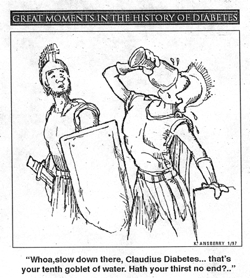
|
- This image is highly expressive.
- While the image does express an idea, which is not in and of itself protectable, there are creative choices made in that expression which merit protection.
|
- Remove & Annotate
- (or Search for a replacement)
|
- A cartoon like the one illustrated has a great deal of creative expression. It does not seek to represent a process, it is not merged with an idea, and it is not essentially utilitarian. Drawings like this are at the heart of the copyright act and are afforded full protection.
Case Law:
- Bleistein v. Donaldson Lithographing Company, 188 U.S. 239 (1903)
|
|
A standard Cartoon 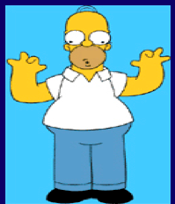
|
- This image is highly expressive.
- While the image does express an idea, which is not in and of itself protectable, there are creative choices made in that expression which merit protection.
|
- Remove & Annotate
- (or Search for a replacement)
|
- A cartoon like the one illustrated has a great deal of creative expression. It does not seek to represent a process, it is not merged with an idea, and it is not essentially utilitarian. Drawings like this are at the heart of the copyright act and are afforded full protection.
Case Law:
- Bleistein v. Donaldson Lithographing Company, 188 U.S. 239 (1903)
|
|
A standard Cartoon 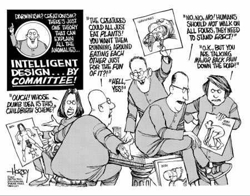
|
- This image is highly expressive.
- While the image does express an idea, which is not in and of itself protectable, there are creative choices made in that expression which merit protection.
|
- Remove & Annotate
- (or Search for a replacement)
|
- A cartoon like the one illustrated has a great deal of creative expression. It does not seek to represent a process, it is not merged with an idea, and it is not essentially utilitarian. Drawings like this are at the heart of the copyright act and are afforded full protection.
Case Law:
- Bleistein v. Donaldson Lithographing Company, 188 U.S. 239 (1903)
|
[edit] Representations of Chemical Structures
Chemical structures are commonly represented as shapes, representing the chemical elements, connected by lines, representing the bonds between them. Representations of chemical structures are generally presented in a similar fashion, and they exist to convey the essential nature of the underlying chemical. As such, they do not enjoy copyright protection and are fine for our purposes. It is important to note that while chemical representations themselves are not protectable, there may be elements in them that are.
|
A Basic Chemical Representation 
|
- This is a chemical representation.
- The essential purpose of this image is to represent the composition of a chemical.
- This depiction shows common/standard/typical/ordinary/basic/routine choices for chemical compositions.
|
- Retain: Copyright Analysis
|
- There really is no other basic way to represent this chemical structure. The idea has merged with the expression, and as such, the image is not subject to copyright protection.
Statute
- 17 U.S.C. § 102(b)- In no case does copyright protection for an original work of authorship extend to any idea, procedure, process, system, method of operation, concept, principle, or discovery, regardless of the form in which it is described, explained, illustrated, or embodied in such work.
Case Law:
- Morrissey v. Procter & Gamble 379 F.2d 675 (1st Cir. 1967) - when there is only one or a few ways of expressing an idea then courts will find that the idea merges with the expression and the work is not subject to copyright protection. This is a natural outflow of the Court's reasoning in Baker v. Seldon.
- Atari, Inc. v. North American Phillips Consumer Electronics, 672 F.2d 607 at 616 “incidents. Characters, or settings which are as a practical manner indispensible, or at least standard , in the treatment of a given topic,” are not subject to copyright protection.
|
|
A Basic Chemical Representation Comparison 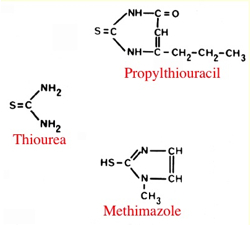
|
- This is a chemical representation.
- The essential purpose of this image is to represent the composition of a chemical.
- Chemical compositions are represented in definite ways.
- This depiction shows common/standard/typical/ordinary/basic/routine choices for chemical compositions.
|
- Retain: Copyright Analysis
|
- There really is no other basic way to represent this chemical structure. The idea has merged with the expression, and as such, the image is not subject to copyright protection.
Statute
- 17 U.S.C. § 102(b)- In no case does copyright protection for an original work of authorship extend to any idea, procedure, process, system, method of operation, concept, principle, or discovery, regardless of the form in which it is described, explained, illustrated, or embodied in such work.
Case Law:
- Morrissey v. Procter & Gamble 379 F.2d 675 (1st Cir. 1967) - when there is only one or a few ways of expressing an idea then courts will find that the idea merges with the expression and the work is not subject to copyright protection. This is a natural outflow of the Court's reasoning in Baker v. Seldon.
- Atari, Inc. v. North American Phillips Consumer Electronics, 672 F.2d 607 at 616 “incidents. Characters, or settings which are as a practical manner indispensible, or at least standard , in the treatment of a given topic,” are not subject to copyright protection.
|
|
A Basic Chemical Representation Comparison 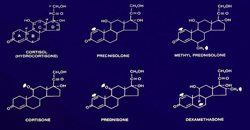
|
- This is a chemical representation.
- The essential purpose of this image is to represent the composition of a chemical.
- This depiction shows common/standard/typical/ordinary/basic/routine choices for chemical compositions.
|
- Retain: Copyright Analysis
|
- There really is no other basic way to represent this chemical structure. The idea has merged with the expression, and as such, the image is not subject to copyright protection.
Statute
- 17 U.S.C. § 102(b)- In no case does copyright protection for an original work of authorship extend to any idea, procedure, process, system, method of operation, concept, principle, or discovery, regardless of the form in which it is described, explained, illustrated, or embodied in such work.
Case Law:
- Morrissey v. Procter & Gamble 379 F.2d 675 (1st Cir. 1967) - when there is only one or a few ways of expressing an idea then courts will find that the idea merges with the expression and the work is not subject to copyright protection. This is a natural outflow of the Court's reasoning in Baker v. Seldon.
- Atari, Inc. v. North American Phillips Consumer Electronics, 672 F.2d 607 at 616 “incidents. Characters, or settings which are as a practical manner indispensible, or at least standard , in the treatment of a given topic,” are not subject to copyright protection.
|
|
A Chemical Representation with Mixed elements 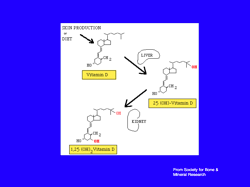
|
- This is a chemical representation.
- The essential purpose of this image is to represent the composition of a chemical.
- This depiction shows common/standard/typical/ordinary/basic/routine choices for chemical compositions.
|
- Retain: Copyright Analysis
|
- Although there are some expressive elements, there really is no other basic way to represent this chemical structure. The idea has merged with the expression, and as such, the image is not subject to copyright protection.
Statute
- 17 U.S.C. § 102(b)- In no case does copyright protection for an original work of authorship extend to any idea, procedure, process, system, method of operation, concept, principle, or discovery, regardless of the form in which it is described, explained, illustrated, or embodied in such work.
Case Law:
- Morrissey v. Procter & Gamble 379 F.2d 675 (1st Cir. 1967) - when there is only one or a few ways of expressing an idea then courts will find that the idea merges with the expression and the work is not subject to copyright protection. This is a natural outflow of the Court's reasoning in Baker v. Seldon.
- Atari, Inc. v. North American Phillips Consumer Electronics, 672 F.2d 607 at 616 “incidents. Characters, or settings which are as a practical manner indispensible, or at least standard , in the treatment of a given topic,” are not subject to copyright protection.
|
[edit] Computer Graphic
Computer graphics are illustrations created with the assistance of a computer. For the purposes of copyright law, there are no differences between computer illustrations and hand drawn images; both can be artistic and expressive, or utilitarian and functional. Rather than focusing too much on the medium in which the image has been created, it is better to analyze the nature of the illustration itself.
|
A Basic Computer Graphic 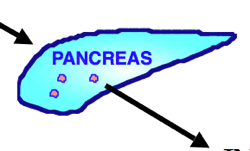
|
- This is a basic representation of a process.
- There doesn't appear to be creative choices here; all choices seem to have been made to convey information.
|
- Retain: Copyright Analysis
|
- The object has very little artistic expression and creativity. Additionally, the purpose of the object seems to be to convey information.
- The fact that the image is labeled helps lead to a determination that the image is informational.
Statute
- 17 U.S.C. § 102(b)- In no case does copyright protection for an original work of authorship extend to any idea, procedure, process, system, method of operation, concept, principle, or discovery, regardless of the form in which it is described, explained, illustrated, or embodied in such work.
Case Law:
- Morrissey v. Procter & Gamble 379 F.2d 675 (1st Cir. 1967) - when there is only one or a few ways of expressing an idea then courts will find that the idea merges with the expression and the work is not subject to copyright protection. This is a natural outflow of the Court's reasoning in Baker v. Seldon.
|
|
Clip Art Style Computer Graphics 
|
- This is a basic representation of an object.
- While it appears that all choices were made to convey only information, it can be argued that it contains creative choice, thus we err on the side of caution.
|
- Remove & Annotate
- (or Search for a replacement)
|
Statute
- 17 U.S.C. § 102(b)- In no case does copyright protection for an original work of authorship extend to any idea, procedure, process, system, method of operation, concept, principle, or discovery, regardless of the form in which it is described, explained, illustrated, or embodied in such work.
Case Law:
- Morrissey v. Procter & Gamble 379 F.2d 675 (1st Cir. 1967) - when there is only one or a few ways of expressing an idea then courts will find that the idea merges with the expression and the work is not subject to copyright protection. This is a natural outflow of the Court's reasoning in Baker v. Seldon.
|
|
Graphic Art 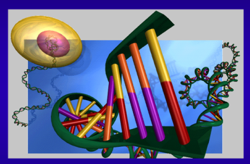
|
- There are many creative choices in this image.
- The image seems to do more than explain a process, idea, or serve a utilitarian function.
|
- Remove & Annotate
- (or Search for a replacement)
|
- When there are many elements of an image that show expression, then it enjoys copyright protection, and cannot be used for our purposes.
Case Law:
- Bleistein v. Donaldson Lithographing Company, 188 U.S. 239 (1903)
|
[edit] Sketch or Drawing or Diagram
For the purposes of copyright law, there are no differences between computer illustrations and hand drawn images; both can be artistic and expressive, or utilitarian and functional. Rather than focusing too much on the medium in which the image has been created, it is better to analyze the nature of the illustration itself.
|
A diagram of a process 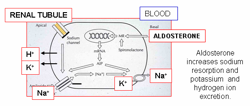
|
- This is a simple diagram/schematic depicting a process.
- The underlying process is not protected by copyright.
- This depiction shows little, if any, creative choice. The choices made appear to have been for clarity.
- Thus this depiction is also not protected by copyright.
|
- Retain: Copyright Analysis
|
- A diagram like the one illustrated is a clear visual representation of a process.
- Although the image is of a process, the representation may have a creative elements that denote authorship.
Statute
- 17 U.S.C. § 102(b)- In no case does copyright protection for an original work of authorship extend to any idea, procedure, process, system, method of operation, concept, principle, or discovery, regardless of the form in which it is described, explained, illustrated, or embodied in such work.
Case Law:
- Baker v. Seldon, 101 U.S. 99 (1879)
|
|
A diagram of a process 
|
- This is a simple diagram/schematic depicting a process.
- The underlying process is not protected by copyright.
- This depiction shows common/standard/typical/ordinary/basic/routine choices for the content type.
- Thus this depiction is also not protected by copyright.
|
- Retain: Copyright Analysis
|
- A diagram like the one illustrated is a visual representation of a process.
- Although a process, the representation may have a creative elements that denote authorship.
Statute
- 17 U.S.C. § 102(b)- In no case does copyright protection for an original work of authorship extend to any idea, procedure, process, system, method of operation, concept, principle, or discovery, regardless of the form in which it is described, explained, illustrated, or embodied in such work. Case Law:
- Baker v. Seldon, 101 U.S. 99 (1879)
|
|
Anatomy sketch 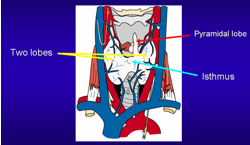
|
- Detailed anatomical drawings that exist to accurately represent medical ideas have little copyright protection.
- This depiction shows common/standard/typical/ordinary/basic/routine choices for the content type.
|
- Retain: Copyright Analysis
|
- As labeled sketch of human anatomy, this image exists to convey information, and serves a utilitarian purpose.
Case Law:
- Feist Publications, Inc., v. Rural Telephone Service Co., 499 U.S. 340 (1991)
- Hoehling v. Universal City Studios, Inc. 618 F.2d 972 (2nd Cir. 1980)
- American Institute of Architects v. Fenichel, 41 F.Supp. 146 (S.D.N.Y. 1941)
|
|
Anatomy sketch 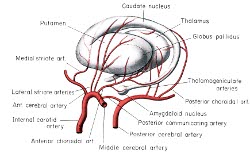
|
- A 3D depiction of a single human organ in high detail utilizing color and shading.
|
Remove & Annotate
- (or Search for a replacement)
|
- As labeled sketch of human anatomy, this image exists to convey information, and serves a utilitarian purpose.
- However, there could be enough originality and creative choice to warrant copyright protection, thus we err on the side of caution.
Case Law:
- Feist Publications, Inc., v. Rural Telephone Service Co., 499 U.S. 340 (1991)
- Hoehling v. Universal City Studios, Inc. 618 F.2d 972 (2nd Cir. 1980)
- American Institute of Architects v. Fenichel, 41 F.Supp. 146 (S.D.N.Y. 1941)
|
|
Anatomy sketch 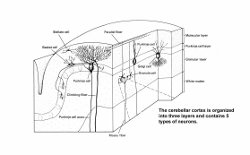
|
- A 3D depiction of the different parts of an organ with labels. Simplified to provide a clear distinction between the parts.
- This depiction shows common/standard/typical/ordinary/basic/routine choices for the content type.
|
- Retain: Copyright Analysis
|
- A labeled sketch of human anatomy, this image exists to convey information, and serves a utilitarian purpose.
Case Law:
- Feist Publications, Inc., v. Rural Telephone Service Co., 499 U.S. 340 (1991)
- Hoehling v. Universal City Studios, Inc. 618 F.2d 972 (2nd Cir. 1980)
- American Institute of Architects v. Fenichel, 41 F.Supp. 146 (S.D.N.Y. 1941)
|
|
A public domain image 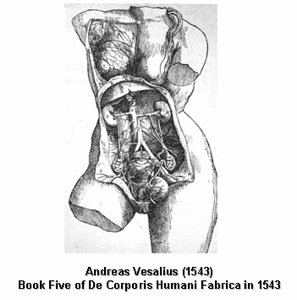
|
- This image is in the public domain, since it was created before 1923. Public domain images are not subject to a copyright analysis.
|
- Retain: Copyright Analysis
|
- Images in the public domain can always be used. Additionally, this image may be utilitarian or exist solely to convey information.
|
|
A diagram of a process 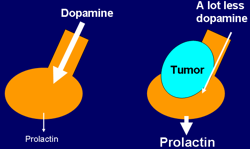
|
- This is a simple diagram/schematic depicting a process.
- The underlying process is not protected by copyright.
- This depiction shows common/standard/typical/ordinary/basic/routine choices for the content type.
- Thus this depiction is also not protected by copyright.
|
- Retain: Copyright Analysis
|
- A diagram like the one illustrated is a visual representation of a process.
- Although a process, the representation may have a creative elements that denote authorship.
Statute
- 17 U.S.C. § 102(b)- In no case does copyright protection for an original work of authorship extend to any idea, procedure, process, system, method of operation, concept, principle, or discovery, regardless of the form in which it is described, explained, illustrated, or embodied in such work.
Case Law:
- Baker v. Seldon, 101 U.S. 99 (1879)
|
|
Accurate Drawing of Fungus 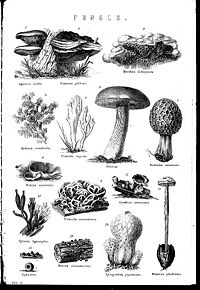
|
- This is a highly detailed drawing, with an eye to recreating the drawn subject as faithfully as possible.
|
Remove & Annotate
- (or Search for a replacement)
|
- The choices associated with this work involve more than pure faithful representation and the style of the author is apparent.
Case Law:
|
[edit] Scientific Image
[edit] Radiograph (X-Ray)
Radiographs, commonly known as x-rays, are images created by passing electromagnetic radiation though an object and into a photographic medium. Radiographs generally seek to represent the underlying subject matter as closely as possible, without any added creativity expression, and as such are not protected by copyright. However, it is important to note that radiographs can be used artistically, and when used in such a matter, merit copyright protection.
|
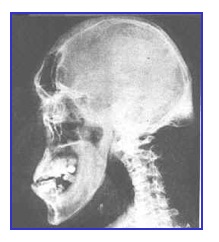
|
- This is an X-ray, a mechanical representation of the image.
- X-rays are created by a mechanical process, and represent the subject with complete fidelity.
|
- Retain: Copyright Analysis
|
- Like other representational images, X-rays are designed to convey the underlying image with as much accuracy as possible.
- Since all choices are made with the intention of faithful representation, the choices aren't creative, and do not merit much protection.
Case Law:
- Meshwerks, Inc. v. Toyota Motor Sales, U.S.A., Inc. - there is no copyright protection when the purpose is to faithfully represent the underlying object, to depict the object as the object "is."
|
|
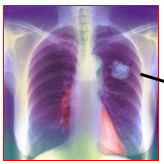
|
- This is an X-ray, a mechanical representation of the image.
- X-rays are created by a mechanical process, and represent the subject with complete fidelity.
|
- Retain: Copyright Analysis
|
- Like other representational images, X-rays are designed to convey the underlying image with as much accuracy as possible.
- Since all choices are made with the intention of faithful representation, the choices aren't creative, and do not merit much protection.
- Even though the X-ray has been edited and color added, the additions are for clarity and information, not creativity.
Case Law:
- Meshwerks, Inc. v. Toyota Motor Sales, U.S.A., Inc. - there is no copyright protection when the purpose is to faithfully represent the underlying object, to depict the object as the object "is."
|
[edit] Microscopy Image
Microscopy images generally seek to represent the underlying subject matter as closely as possible, without any added creativity expression, and as such are not protected by copyright. However, it is important to note that microscopy images can be used artistically, and when used in such a matter, merit copyright protection.
|
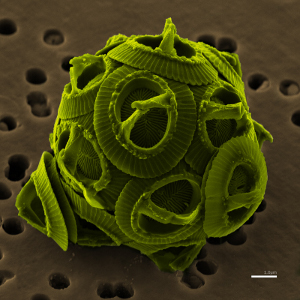
|
- This image was created by an electron microscope, and is a mechanical representation of the image.
- Electron microscope images are created by a mechanical process, and represent the subject with complete fidelity.
|
- Retain: Copyright Analysis
|
- Like other representational images, electron microscope images are designed to convey the underlying image with as much accuracy as possible.
- Since all choices are made with the intention of faithful representation, the choices aren't creative, and do not merit much protection.
Case Law:
- Meshwerks, Inc. v. Toyota Motor Sales, U.S.A., Inc. - there is no copyright protection when the purpose is to faithfully represent the underlying object, to depict the object as the object "is."
|
|

|
- This image was created by an electron microscope, and is a mechanical representation of the image.
- Electron microscope images are created by a mechanical process, and represent the subject with complete fidelity.
|
- Retain: Copyright Analysis
|
- Like other representational images, electron microscope images are designed to convey the underlying image with as much accuracy as possible.
- Since all choices are made with the intention of faithful representation, the choices aren't creative, and do not merit much protection.
Case Law:
- Meshwerks, Inc. v. Toyota Motor Sales, U.S.A., Inc. - there is no copyright protection when the purpose is to faithfully represent the underlying object, to depict the object as the object "is."
|
[edit] Histology / Pathology Slide Image
Histology and pathology slides generally seek to represent the underlying subject matter as closely as possible, without any added creativity expression, and as such are not protected by copyright.
|
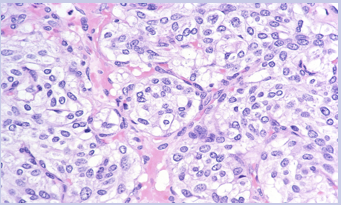
|
- This image is a histological slide, and is a mechanical representation of the underlying image.
- Histological slides are created by a mechanical process, and represent the subject with complete fidelity.
|
- Retain: Copyright Analysis
|
- Like other representational images, histology slides are intended to convey the underlying image with as much accuracy as possible.
- Since all choices are made with the intention of faithful representation, the choices aren't creative, and do not merit much protection.
Case Law:
- Meshwerks, Inc. v. Toyota Motor Sales, U.S.A., Inc. - there is no copyright protection when the purpose is to faithfully represent the underlying object, to depict the object as the object "is."
|
|
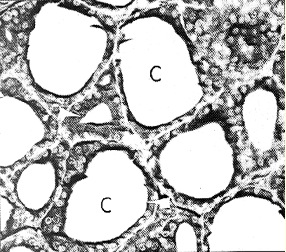
|
- This image is a histological slide, and is a mechanical representation of the underlying image.
- Histological slides are created by a mechanical process, and represent the subject with complete fidelity.
|
- Retain: Copyright Analysis
|
- Like other representational images, histology slides are intended to convey the underlying image with as much accuracy as possible.
- Since all choices are made with the intention of faithful representation, the choices aren't creative, and do not merit much protection.
Case Law:
- Meshwerks, Inc. v. Toyota Motor Sales, U.S.A., Inc. - there is no copyright protection when the purpose is to faithfully represent the underlying object, to depict the object as the object "is."
|
|
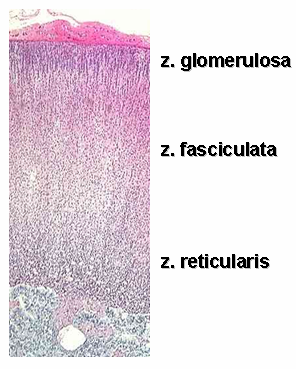
|
- This image is a histological slide, and is a mechanical representation of the underlying image.
- Histological slides are created by a mechanical process, and represent the subject with complete fidelity.
|
- Retain: Copyright Analysis
|
- Like other representational images, histology slides are intended to convey the underlying image with as much accuracy as possible.
- Since all choices are made with the intention of faithful representation, the choices aren't creative, and do not merit much protection.
- Even though this image has added coloring and text, those choices are essentially informational in character, and are not creative.
Case Law:
- Meshwerks, Inc. v. Toyota Motor Sales, U.S.A., Inc. - there is no copyright protection when the purpose is to faithfully represent the underlying object, to depict the object as the object "is."
|
[edit] Ultrasound scan
Ultrasound scans generally seek to represent the underlying subject matter as closely as possible, without any added creativity expression, and as such are not protected by copyright. However, it is important to note that ultrasound scans can be used artistically, and when used in such a matter, merit copyright protection.
|
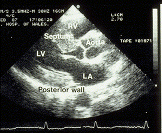
|
- This image is an ultrasound scan, and is a mechanical representation of the underlying image.
- Ultrasound images are created by a mechanical process, and represent the subject with complete fidelity.
|
- Retain: Copyright Analysis
|
- Like other representational images, ultrasound scans are intended to convey the underlying image with as much accuracy as possible.
- Since all choices are made with the intention of faithful representation, the choices aren't creative, and do not merit much protection.
Case Law:
- Meshwerks, Inc. v. Toyota Motor Sales, U.S.A., Inc. - there is no copyright protection when the purpose is to faithfully represent the underlying object, to depict the object as the object "is."
|
|
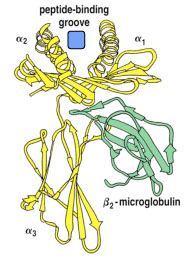
|
- This is an image of Protein Folding.
- This depiction shows common/standard/typical/ordinary/basic/routine choices for the content type.
|
- Retain: Copyright Analysis
|
- Protein folding images are created by a mechanical process, and many of the elements solely exist to convey information.
- While there are colors in the image, they are there to convey information and do not represent creative expression.
Statute
- 17 U.S.C. § 102(b)- In no case does copyright protection for an original work of authorship extend to any idea, procedure, process, system, method of operation, concept, principle, or discovery, regardless of the form in which it is described, explained, illustrated, or embodied in such work.
Case Law:
- Feist Publications, Inc., v. Rural Telephone Service Co., 499 U.S. 340 (1991)
- Hoehling v. Universal City Studios, Inc. 618 F.2d 972 (2nd Cir. 1980)
- American Institute of Architects v. Fenichel, 41 F.Supp. 146 (S.D.N.Y. 1941)
|
|

|
- This image represents gene expression.
- This depiction shows common/standard/typical/ordinary/basic/routine choices for the content type.
|
- Retain: Copyright Analysis
|
- This image shows the process by which DNA and RNA result in gene expression. Fundamentally, this image represents a process, and does not enjoy copyright protection.
Statute
- 17 U.S.C. § 102(b)- In no case does copyright protection for an original work of authorship extend to any idea, procedure, process, system, method of operation, concept, principle, or discovery, regardless of the form in which it is described, explained, illustrated, or embodied in such work.
Case Law:
- Baker v. Seldon, 101 U.S. 99 (1879)
- Atari, Inc. v. North American Phillips Consumer Electronics, 672 F.2d 607 at 616 “incidents. Characters, or settings which are as a practical manner indispensible, or at least standard , in the treatment of a given topic,” are not subject to copyright protection.
|
[edit] Photograph
Photographs are a very large and complex category, and they can possess varying degrees of copyright protection. If a photograph is artistic or expressive, then it will clearly enjoy strong protection. However, photographs that just convey the underlying subject matter as faithfully as possible may not possess the requisite spark of creativity, and may not be protectable.
|
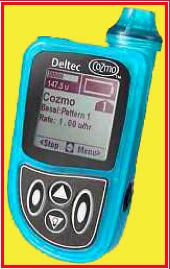
|
- This is a photograph of a medical device.
|
- Remove & Annotate
- (or Search for a replacement)
|
- A copyright analysis on a photograph necessarily depends on the creator's subjective intent. If the photograph exists only to convey information and faithfully represent the underlying object, then it likely does not enjoy copyright protection.
- However, it could be argued that there is more creative choice involved with this photo, thus we err on the side of caution.
Case Law:
- Meshwerks, Inc. v. Toyota Motor Sales, U.S.A., Inc. - there is no copyright protection when the purpose is to faithfully represent the underlying object, to depict the object as the object "is."
|
|

|
- This is a photograph of a medical device.
|
- Remove & Annotate
- (or Search for a replacement)
|
- A copyright analysis on a photograph necessarily depends on the creator's subjective intent. If the photograph exists only to convey information and faithfully represent the underlying object, then it likely does not enjoy copyright protection.
- However, it could be argued that there is more creative choice involved with this photo, thus we err on the side of caution.
Case Law:
- Meshwerks, Inc. v. Toyota Motor Sales, U.S.A., Inc. - there is no copyright protection when the purpose is to faithfully represent the underlying object, to depict the object as the object "is."
|
|

|
- This is a photograph of a set table with food.
- The artist's intention in making the photograph is not clear.
- Since we cannot determine the artist's intent, for our purposes, we cannot use the image.
|
Remove & Annotate
- (or Search for a replacement)
|
- It is entirely possible that this image might be solely utilitarian and non expressive. However, since we cannot tell for sure, for our purposes, we cannot use the image.
Case Law:
- Burrow-Giles Lithographic Co. v. Sarony, 111 U.S. 53 (1884)
|
|
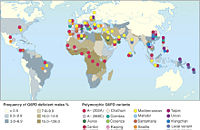
|
- This is a data driven map.
|
- Retain: Copyright Analysis
|
- This map represents data. All choices made in the creation of the map were based upon utilitarian and informational considerations.
Case Law:
- Morrissey v. Procter & Gamble 379 F.2d 675 (1st Cir. 1967) - when there is only one or a few ways of expressing an idea then courts will find that the idea merges with the expression and the work is not subject to copyright protection. This is a natural outflow of the Court's reasoning in Baker v. Seldon.
- Feist Publications, Inc., v. Rural Telephone Service Co., 499 U.S. 340 (1991)
- Hoehling v. Universal City Studios, Inc. 618 F.2d 972 (2nd Cir. 1980)
- American Institute of Architects v. Fenichel, 41 F.Supp. 146 (S.D.N.Y. 1941)
|
|
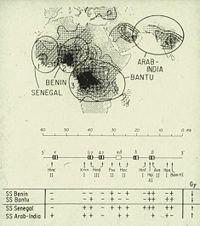
|
- This is a data driven hand drawn map.
|
- Retain: Copyright Analysis
|
- This map represents data. All choices made in the creation of the map were based upon utilitarian and informational considerations.
Case Law:
- Morrissey v. Procter & Gamble 379 F.2d 675 (1st Cir. 1967) - when there is only one or a few ways of expressing an idea then courts will find that the idea merges with the expression and the work is not subject to copyright protection. This is a natural outflow of the Court's reasoning in Baker v. Seldon.
- Feist Publications, Inc., v. Rural Telephone Service Co., 499 U.S. 340 (1991)
- Hoehling v. Universal City Studios, Inc. 618 F.2d 972 (2nd Cir. 1980)
- American Institute of Architects v. Fenichel, 41 F.Supp. 146 (S.D.N.Y. 1941)
|
|

|
- This is a map of a fictitious location.
|
Remove & Annotate
- (or Search for a replacement)
|
- Maps can be very tricky. This is a map of a fictitious location, and as such, is at the heart of creative expression, and merits strong copyright protection.
|
|

|
- This is a satellite photographic map.
|
- Retain: Copyright Analysis
|
Case Law:
- As a satellite map, this image is a faithful representation of its subject matter, and therefore does not enjoy copyright protection.
- Meshwerks, Inc. v. Toyota Motor Sales, U.S.A., Inc. - there is no copyright protection when the purpose is to faithfully represent the underlying object, to depict the object as the object "is."
|
|
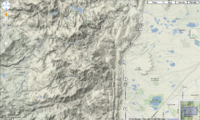
|
- This is a topographical map.
|
- Retain: Copyright Analysis
|
- As a topographical map, this image is a faithful representation of its subject matter, and therefore does not enjoy copyright protection.
Case Law:
- Feist Publications, Inc., v. Rural Telephone Service Co., 499 U.S. 340 (1991)
- Hoehling v. Universal City Studios, Inc. 618 F.2d 972 (2nd Cir. 1980)
- American Institute of Architects v. Fenichel, 41 F.Supp. 146 (S.D.N.Y. 1941)
|
[edit] Screenshot
|
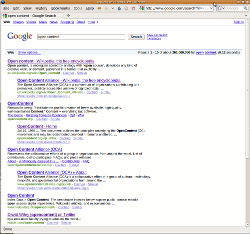
|
- This is a screenshot of the results from a Google search.
|
- Retain: Copyright Analysis
|
|
|
(Pretend the image displayed is All Rights Reserved) 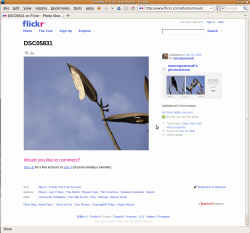
|
- This is a screenshot containing a photograph.
- The underlying photograph is protected by copyright.
- Therefore this image is not usable for our purposes.
|
- Remove: Annotate
|
Case Law:
- Bleistein v. Donaldson Lithographing Company, 188 U.S. 239 (1903)
|
[edit] Advertisements
Advertisements are a category of works, many of which are made up of illustrations, graphics, photographs. They should be analyzed by looking at their constituent parts. Generally, these types of works will enjoy copyright protection, and cannot be used for our purposes.
|
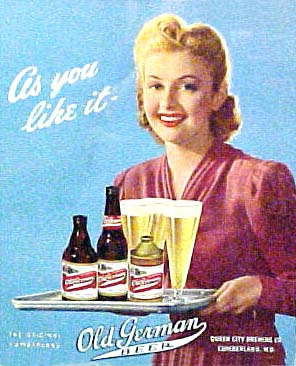
|
- This image is an accurate representation of the original image.
- The poster, itself, is in the public domain.
- As such, this digital image is also no longer protected by copyright.
|
- Advertisements are no different from any other types of works. They should be analyzed in the same manner as any other type of image.
- Mark as:
- Retain: Copyright Analysis
|
- The reproduction (the scan/photograph) of the original is governed by the copyright of the original.
Case Law:
- Bridgeman Art Library, Ltd. v. Corel Corp., 36 F. Supp. 2d 191 (S.D.N.Y. 1999)
|
|

|
- This image is an advertisement, depicting a fanciful image.
- The poster is creative and original.
- As such, the poster is protected by copyright.
|
Remove & Annotate
- (or Search for a replacement)
|
- When there are many elements of an image that show expression, then it enjoys copyright protection, and cannot be used for our purposes.
Case Law:
- Bleistein v. Donaldson Lithographing Company, 188 U.S. 239 (1903)
|
[edit] Book & Magazine Covers
Book and Magazine covers are a category of works, many of which are made up of illustrations, graphics, photographs. They should be analyzed by looking at their constituent parts. Generally, these types of works will enjoy copyright protection, and cannot be used for our purposes.
|
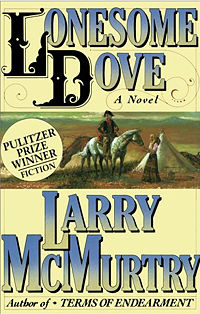
|
- This is the cover of a novel.
- It is highly creative, and merits copyright protection.
|
Remove & Annotate
- (or Search for a replacement)
|
- When there are many elements of an image that show expression, then it enjoys copyright protection, and cannot be used for our purposes.
Case Law:
- Bleistein v. Donaldson Lithographing Company, 188 U.S. 239 (1903)
|
|

|
- This is the cover of a magazine.
- It is highly creative, and merits copyright protection.
|
Remove & Annotate
- (or Search for a replacement)
|
- When there are many elements of an image that show expression, then it enjoys copyright protection, and cannot be used for our purposes.
Case Law:
- Bleistein v. Donaldson Lithographing Company, 188 U.S. 239 (1903)
|
[edit] CD, Record, DVD, Movie, etc
CD, record, DVD covert, etc., are a category of works, many of which are made up of illustrations, graphics, photographs. They should be analyzed by looking at their constituent parts. Generally, these types of works will enjoy copyright protection, and cannot be used for our purposes.
|

|
- This is the cover of a CD.
- It is highly creative, and merits copyright protection.
|
Remove & Annotate
- (or Search for a replacement)
|
- When there are many elements of an image that show expression, then it enjoys copyright protection, and cannot be used for our purposes.
Case Law:
- Bleistein v. Donaldson Lithographing Company, 188 U.S. 239 (1903)
|
|

|
- This is the cover of a DVD.
- It is highly creative, and merits copyright protection.
|
Remove & Annotate
- (or Search for a replacement)
|
- When there are many elements of an image that show expression, then it enjoys copyright protection, and cannot be used for our purposes.
Case Law:
- Bleistein v. Donaldson Lithographing Company, 188 U.S. 239 (1903)
|
|
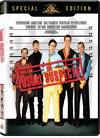
|
- This is the cover of a DVD.
- It is highly creative, and merits copyright protection.
|
Remove & Annotate
- (or Search for a replacement)
|
- When there are many elements of an image that show expression, then it enjoys copyright protection, and cannot be used for our purposes.
Case Law:
- Bleistein v. Donaldson Lithographing Company, 188 U.S. 239 (1903)
|
[edit] Recording
- Audio
- Video
Text can be a tricky category. First, writing itself is protectable. Secondly, the text in this image is arranged artistically and expressively. As such, this image merits copyright protection, and cannot be used for our purposes.
|
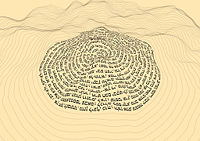
|
- This is an artistic representation of text.
- The text presented in the image is not protected by copyright, however, the layout and arrangement of the text and the surrounding elements is creative.
|
Remove & Annotate
- (or Search for a replacement)
|
- When there are many elements of an image that show expression, then it enjoys copyright protection, and cannot be used for our purposes.
Case Law:
- Bleistein v. Donaldson Lithographing Company, 188 U.S. 239 (1903)
|
[edit] Trademark Uses
A trademark is a symbol or sign used to denote the origin of a good or service, by using trademarks, individuals or corporations ensure that consumers understand that the products or services they are buying come from a recognizable source. While not dissimilar, trademark protection is separate from copyright protection. For our purposes, we do not need to worry too much about trademarks. However, it is important to be aware that some trademarks are expression protectable under copyright law.
|

|
- This image is Apple Computer's trademarked apple image.
- In addition, it is a creative piece of expression protected by copyright law.
|
Remove & Annotate
- (or Search for a replacement)
|
- Trademark law and copyright law implicate different sets of rights. For our purposes, we are mostly concerned with copyright rights. Still, it is important to be aware of trademarks when they appear.
- When there are many elements of an image that show expression, then it enjoys copyright protection, and cannot be used for our purposes.
Case Law:
- Bleistein v. Donaldson Lithographing Company, 188 U.S. 239 (1903)
|
|

|
- This image is the Linux Foundation's trademarked image.
- In addition, it is a creative piece of expression protected by copyright law.
|
Remove & Annotate
- (or Search for a replacement)
|
- Trademark law and copyright law implicate different sets of rights. For our purposes, we are mostly concerned with copyright rights. Still, it is important to be aware of trademarks when they appear.
- When there are many elements of an image that show expression, then it enjoys copyright protection, and cannot be used for our purposes.
Case Law:
- Bleistein v. Donaldson Lithographing Company, 188 U.S. 239 (1903)
|
|

|
- This image is the University of Michigan's trademarked seal.
- In addition, it is a creative piece of expression, although as a government work, it is not protected by copyright law.
|
- Retain: Copyright Analysis
|
- Trademark law and copyright law implicate different sets of rights. For our purposes, we are mostly concerned with copyright rights. Still, it is important to be aware of trademarks when they appear.
|
|

|
- This image is the University of Michigan's trademarked seal.
- In addition, it is a creative piece of expression.
|
- Remove & Annotate
|
- Trademark law and copyright law implicate different sets of rights. For our purposes, we are mostly concerned with copyright rights. Still, it is important to be aware of trademarks when they appear.
- When there are many elements of an image that show expression, then it enjoys copyright protection, and cannot be used for our purposes.
|
|
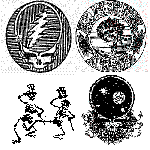
|
- These images are several of the Grateful Dead's trademarks.
- In addition, they are creative pieces of expression protected by copyright law.
|
Remove & Annotate
- (or Search for a replacement)
|
- Trademark law and copyright law implicate different sets of rights. For our purposes, we are mostly concerned with copyright rights. Still, it is important to be aware of trademarks when they appear.
- When there are many elements of an image that show expression, then it enjoys copyright protection, and cannot be used for our purposes.
Case Law:
- Bleistein v. Donaldson Lithographing Company, 188 U.S. 239 (1903)
|































































